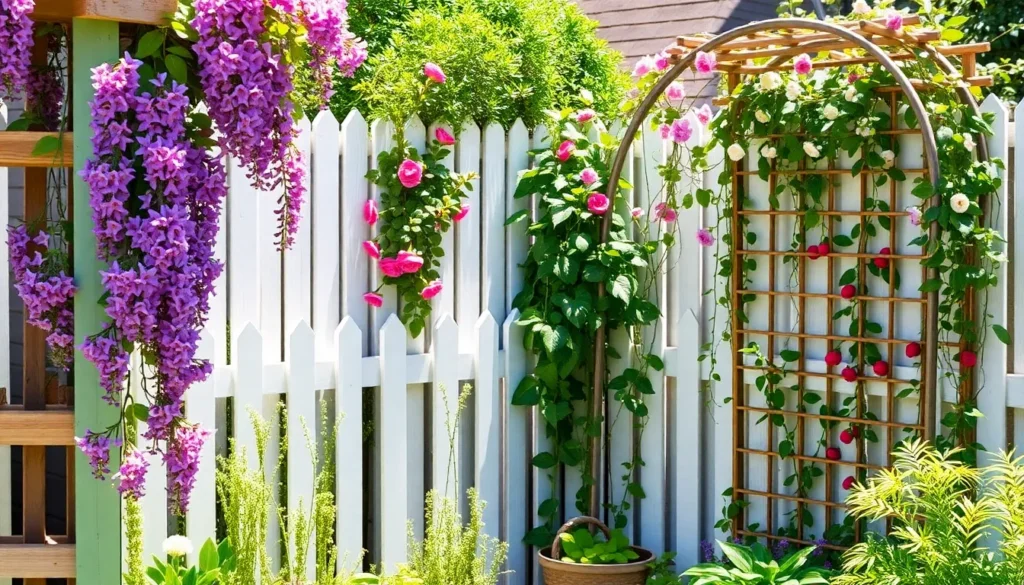Welcome to a world where your garden grows not just outward, but upward, transforming every inch of space into a lush, living tapestry! Whether you’re a curious beginner or a seasoned green thumb, “12 Essential Trellis Ideas For Climbing Plants” will elevate your gardening game to new heights. Imagine the joy of watching your climbing plants reach for the sky, supported by trellises that are as practical as they are beautiful. This guide promises to unlock the secrets of vertical gardening, making the most of your garden space and giving your plants the support they need to thrive.
In this guide, you’ll discover trellis ideas that not only boost the aesthetic appeal of your garden but also enhance the health and productivity of your climbing plants. These versatile structures offer solutions for every gardener’s needs, from maximizing small spaces to creating stunning plant displays. With straightforward tips and creative inspiration, you’ll feel empowered and excited to implement these trellis techniques. Get ready to embrace the joys of successful gardening, where your plants flourish and your confidence as a gardener grows just as vigorously.
Choose Weather-Resistant Trellis Materials
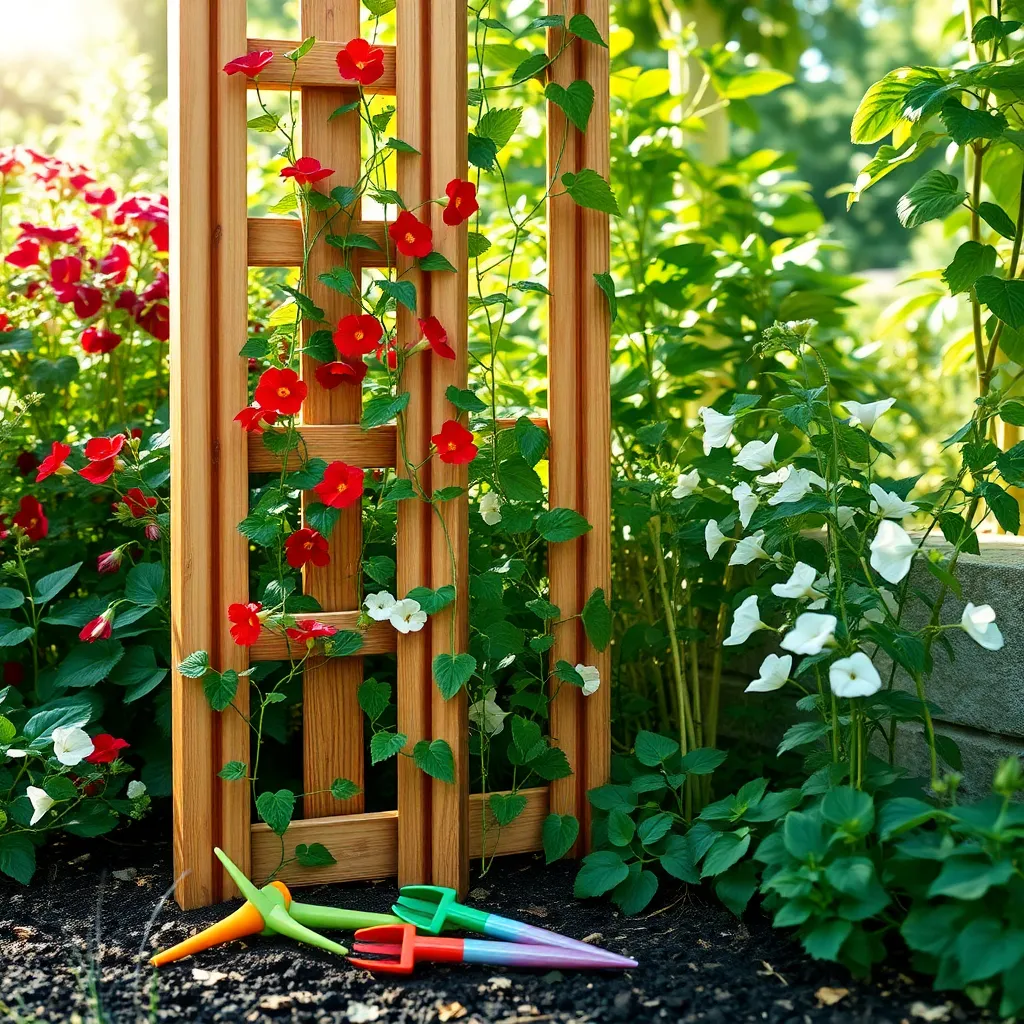
Choosing the right trellis material can make a significant difference in the longevity and effectiveness of your garden setup. Weather-resistant materials not only withstand the elements but also support your plants through various seasons.
Metal trellises, such as those made from galvanized steel or powder-coated aluminum, are excellent choices for durability. These materials resist rust and corrosion, ensuring they remain sturdy and attractive year-round, even in wet climates.
Wood is a classic choice for trellises, but selecting the right type is crucial for weather resistance. Opt for naturally rot-resistant woods like cedar or redwood, and consider applying a weatherproof sealant for added protection against moisture.
For a budget-friendly and lightweight alternative, PVC or vinyl trellises offer good resistance to weather extremes while requiring minimal maintenance. They are particularly suited for gardeners who prefer a low-effort solution with a long lifespan.
Regardless of the material, ensure that your trellis is securely anchored and positioned to accommodate the growth habits of your climbing plants. Regularly inspect your trellis system for any signs of wear and make necessary repairs to prevent damage to your plants.
Install Trellises for Vertical Growth
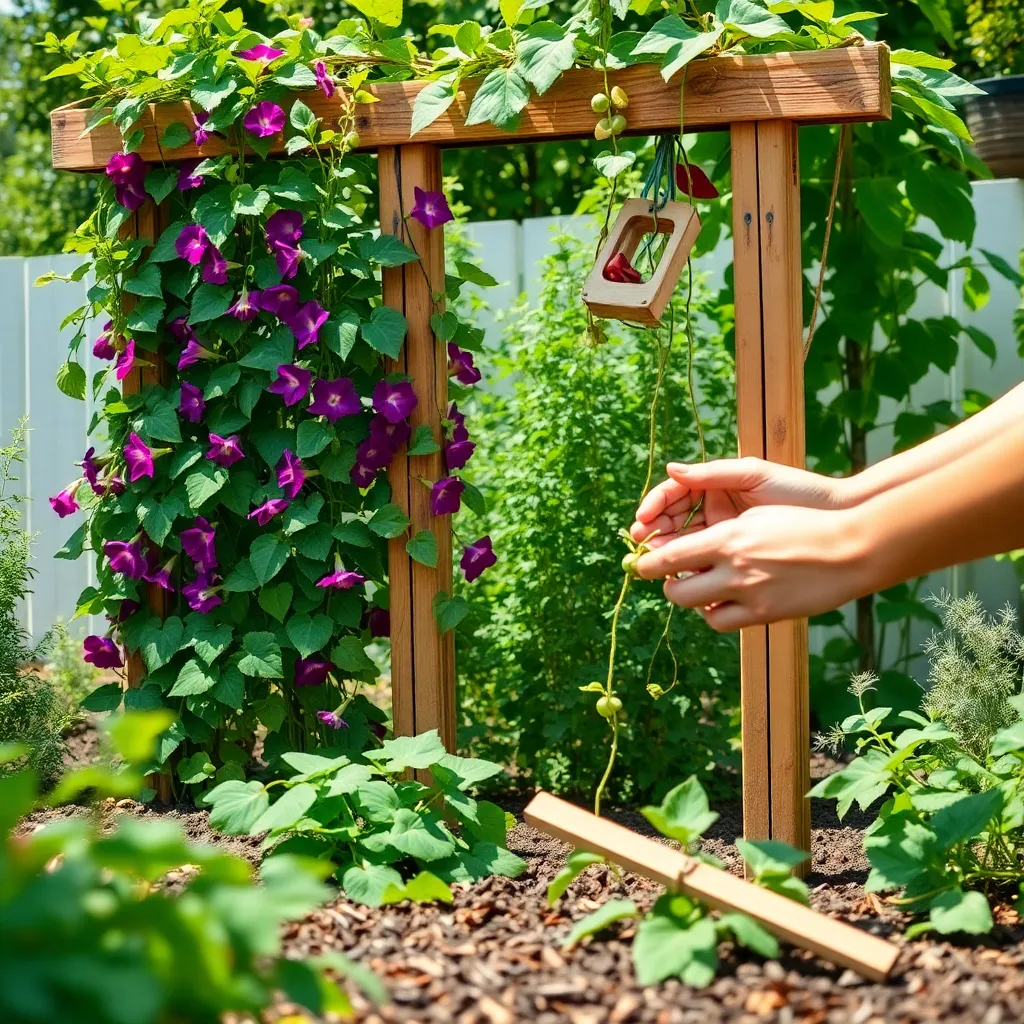
Installing trellises for vertical growth can transform your garden by maximizing space and improving plant health. First, select a location with adequate sunlight, as most climbing plants thrive with at least six hours of direct light each day.
Once you’ve chosen the perfect spot, ensure your trellis is securely anchored to withstand strong winds. Use sturdy materials like metal or treated wood that can support the weight of mature plants.
For beginners, consider starting with easy-to-grow climbers such as peas or beans. These plants not only grow quickly but also enrich the soil with nitrogen, benefiting other plants in your garden.
Advanced gardeners might experiment with espalier techniques to train fruit trees along trellises, creating a beautiful and productive wall of greenery. This involves regularly pruning and tying branches to the trellis, encouraging a flat growth pattern.
Securely Anchor Trellises for Stability
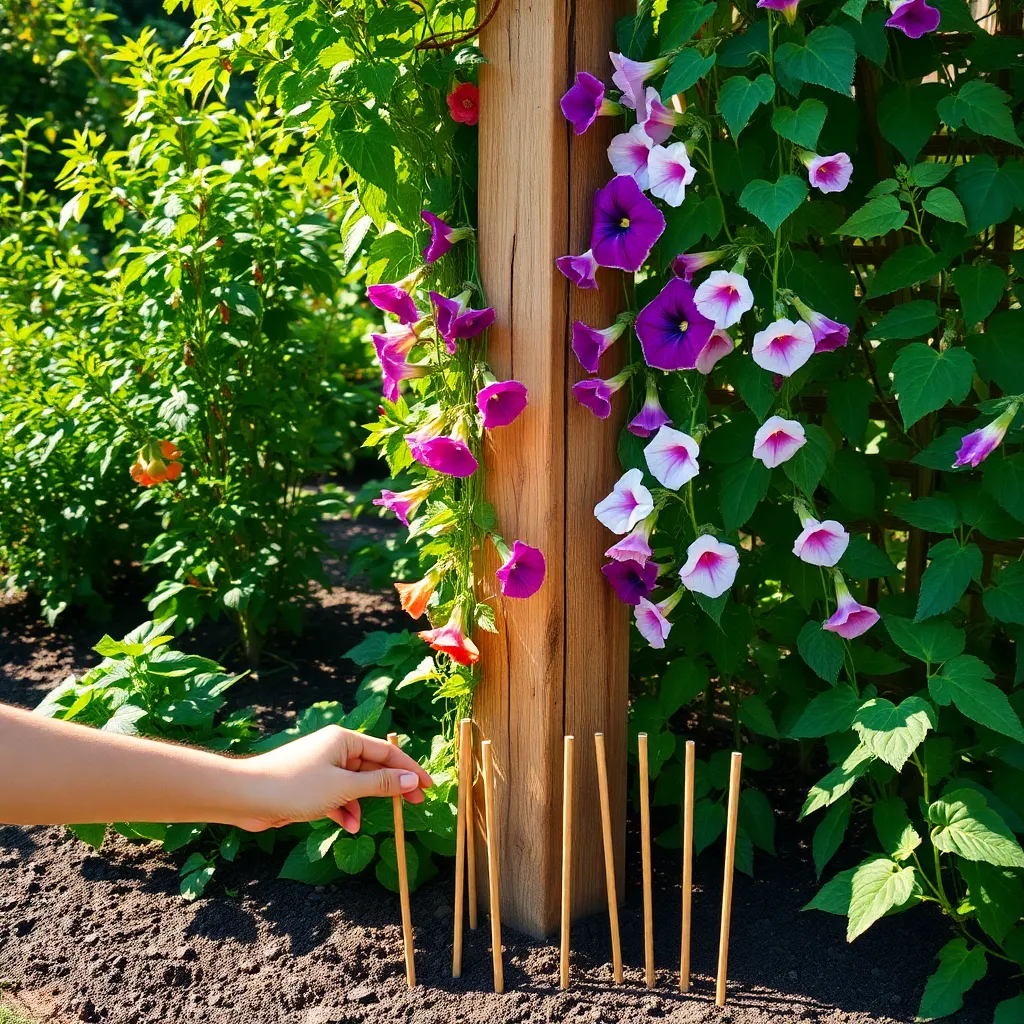
When setting up a trellis, ensuring stability is crucial for both plant health and garden aesthetics. Anchor your trellis securely by driving stakes or metal rods into the ground at least a foot deep.
Position the trellis close to the plant base without crowding it to allow for optimal growth. For added stability, use galvanized wire or zip ties to affix the trellis to the stakes; this will help withstand strong winds or heavy plant loads.
Consider the soil type in your garden, as loose or sandy soils may require deeper or additional anchoring. In such cases, concrete footings can be used for heavier or larger trellises to prevent toppling.
Once installed, regularly check and tighten any loose ties or stakes, especially after storms or high winds. This simple maintenance can ensure your trellis remains a sturdy and reliable support for your climbing plants throughout the growing season.
Space Trellises for Optimal Sunlight
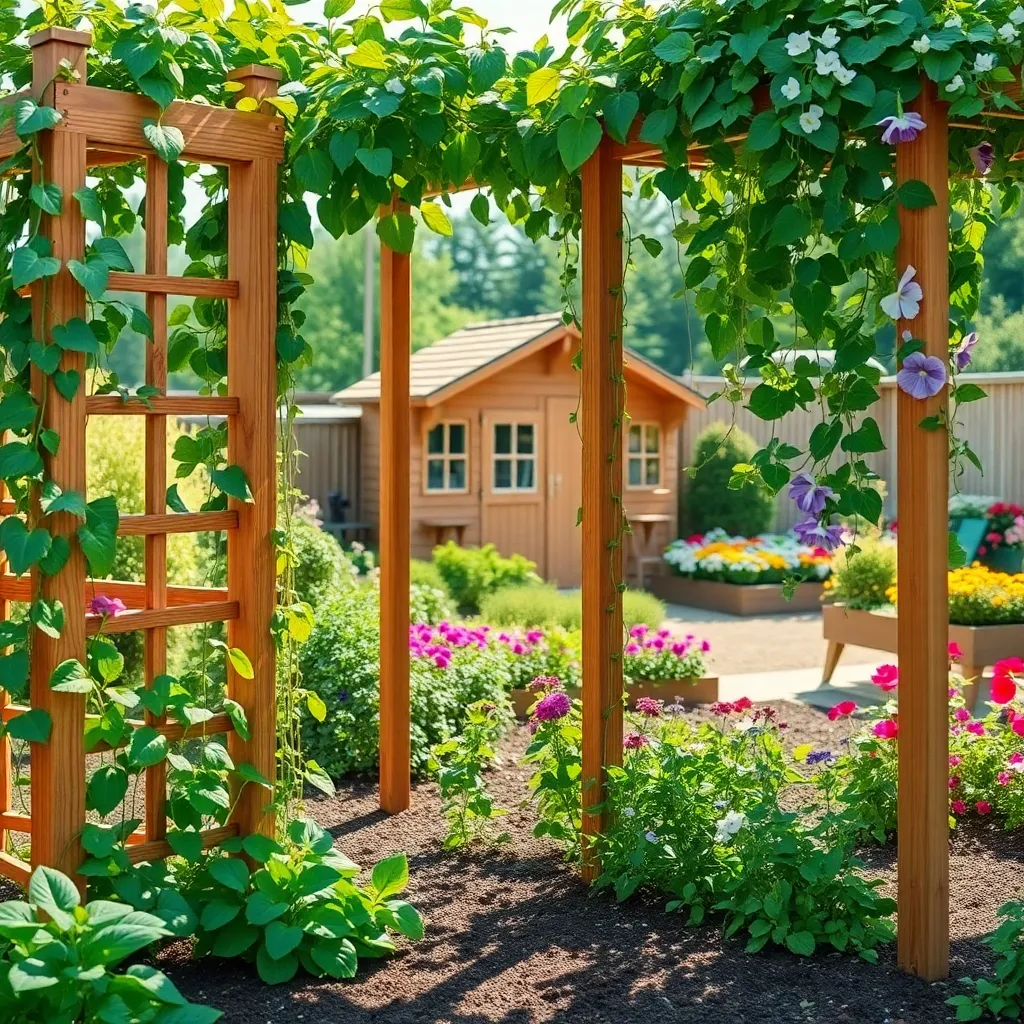
To ensure your climbing plants receive optimal sunlight, it’s crucial to position your trellises strategically. Consider the sun’s path throughout the day and place the trellis where it will maximize exposure, ideally to the south or southeast.
When choosing a location, observe any nearby structures or trees that might cast shadows during key sunlight hours. Adjusting the trellis angle can help avoid these shadows and provide consistent light for your plants.
For beginners, a basic guideline is to place the trellis at least 6 to 12 inches away from walls to prevent shade interference. More advanced gardeners might experiment with adjustable trellis systems, allowing flexibility to change the angle as the seasons shift.
Remember that plants like cucumbers and tomatoes thrive with at least 6 hours of direct sunlight. Using reflective mulches or surfaces around the base can further boost light exposure, enhancing growth and yield.
Use Wire Mesh for Heavy Climbers

When it comes to supporting heavy climbers like wisteria or grapes, using wire mesh can be an ideal solution. This type of support is strong enough to handle the weight and vigorous growth of these plants, ensuring they thrive without causing damage to your structures.
Wire mesh provides excellent stability, especially when anchored securely to sturdy posts or walls. Ensure the mesh is made of galvanized steel to prevent rusting, which can compromise its integrity over time, particularly in humid environments.
For installation, position the mesh vertically to guide plants upward, encouraging healthy vertical growth. Regularly check the attachment points and adjust ties as necessary to accommodate the thickening stems and branches of your climbers.
It’s essential to monitor watering closely, as heavy climbers require consistent moisture, particularly during their active growing season. Use a well-draining soil mix enriched with organic matter to provide nutrients and retain moisture without waterlogging the roots.
Incorporate Arched Trellises for Elegance

Arched trellises can add a touch of elegance to any garden, transforming ordinary spaces into enchanting green tunnels. They are ideal for supporting a variety of climbing plants, such as roses, clematis, or even grapevines, which thrive when given the structure to grow vertically.
When setting up an arched trellis, ensure it is anchored securely in the ground to withstand wind and the weight of mature plants. Use sturdy materials like metal or treated wood that can withstand weathering, ensuring your trellis remains a long-lasting feature of your garden.
Choose plants that suit your climate and sun exposure to maximize the potential of your arched trellis. For sun-loving plants like clematis, place the trellis in an area that receives at least six hours of sunlight daily, and enrich the soil with organic matter to promote healthy growth.
Regular maintenance is key to keeping your arched trellis looking its best. Prune your plants to encourage new growth and prevent them from becoming too heavy for the structure. Water regularly, especially during dry spells, and consider mulching around the base to retain moisture and suppress weeds.
Create Privacy with Tall Trellises

For those seeking a practical solution to create privacy in their gardens, tall trellises are an excellent choice. These structures not only provide seclusion but also offer a vertical space for climbing plants to thrive.
Consider using materials like sturdy wood or metal to ensure your trellis can support the weight of lush, mature vines. It’s crucial to securely anchor the trellis into the ground to withstand wind and rain, ensuring longevity and stability.
Begin with fast-growing climbers like Clematis or Virginia Creeper, which can quickly cover the trellis and provide a green curtain. Ensure these plants receive adequate sunlight and water, typically requiring full sun and consistently moist soil to flourish.
For advanced gardeners, integrating a drip irrigation system can help maintain optimal moisture levels without overwatering. Regularly prune and train your plants to grow directionally along the trellis for a dense and uniform foliage cover.
Opt for Freestanding Trellises for Flexibility

Freestanding trellises offer unmatched flexibility for gardeners looking to maximize their space. They can be easily moved, allowing you to experiment with different locations to find the best sunlight conditions for your climbing plants.
When setting up a freestanding trellis, ensure it is stable and secure by anchoring it firmly in the ground. Use materials like cedar or metal, which are durable and can withstand various weather conditions, ensuring longevity and support for your plants.
For those new to gardening, start with easy-to-grow climbers such as beans or sweet peas, which readily adapt to freestanding trellises. These plants thrive in well-drained soil and require regular watering, particularly during dry spells, to maintain their vigorous growth.
Experienced gardeners might consider experimenting with more challenging species like climbing roses or clematis. These require more attention, such as ensuring their roots are shaded while their foliage enjoys full sun, and they benefit from a balanced fertilizer every few weeks.
Select Decorative Trellises for Aesthetics
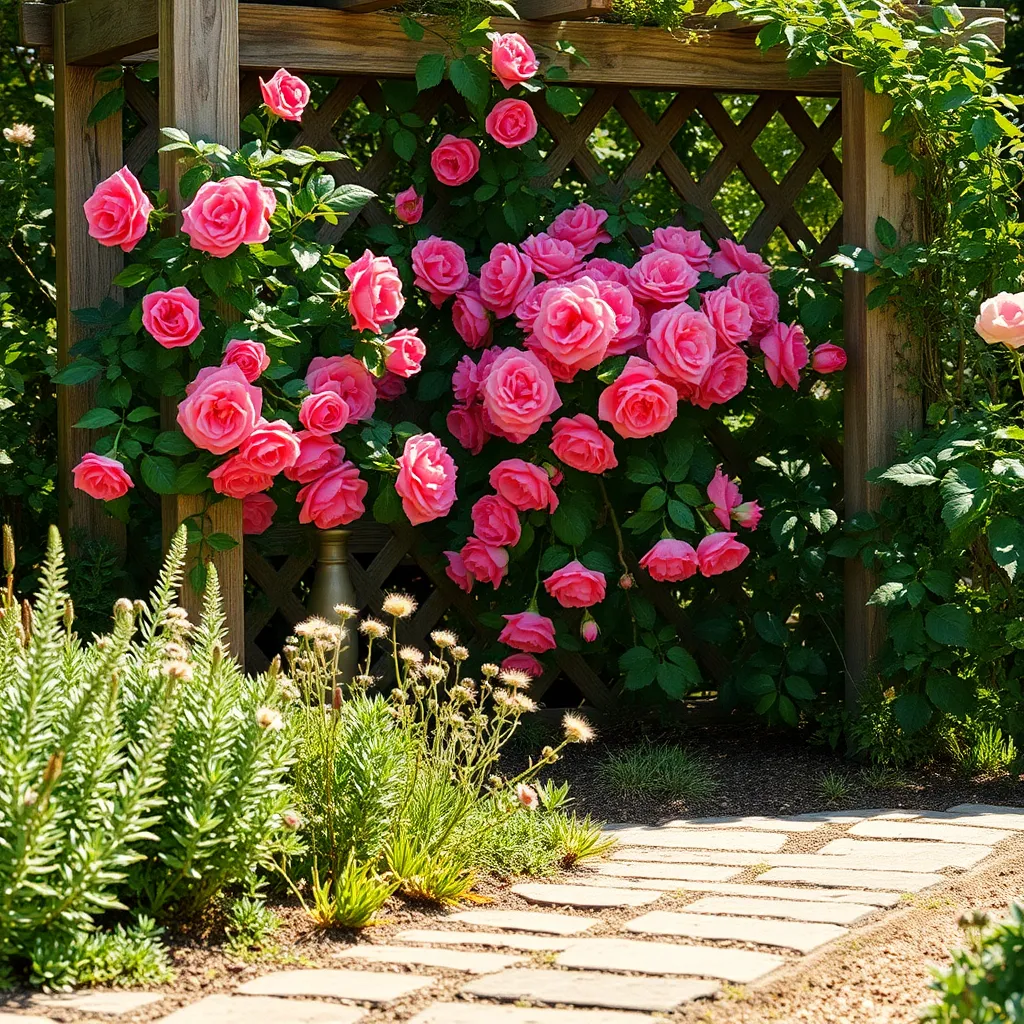
Decorative trellises can transform your garden by adding visual interest while supporting your climbing plants. Choose materials that complement your garden’s style, such as wrought iron for a traditional look or bamboo for a more rustic feel.
Consider the size of your plants when selecting a trellis, ensuring it is sturdy enough to support them as they grow. For beginners, a simple wooden trellis can provide a charming backdrop for flowering vines like clematis or morning glories.
Advanced gardeners might experiment with intricate designs to create a focal point in their garden landscape. For instance, using trellises with geometric patterns can add an element of modernity, enhancing both the beauty and structure of your outdoor space.
Ensure the trellis is installed securely, especially if you’re in an area prone to strong winds. Use a mix of soil and compost to encourage healthy root development, and water your climbing plants regularly, focusing on the early morning or late afternoon.
Utilize Obelisk Trellises for Small Spaces
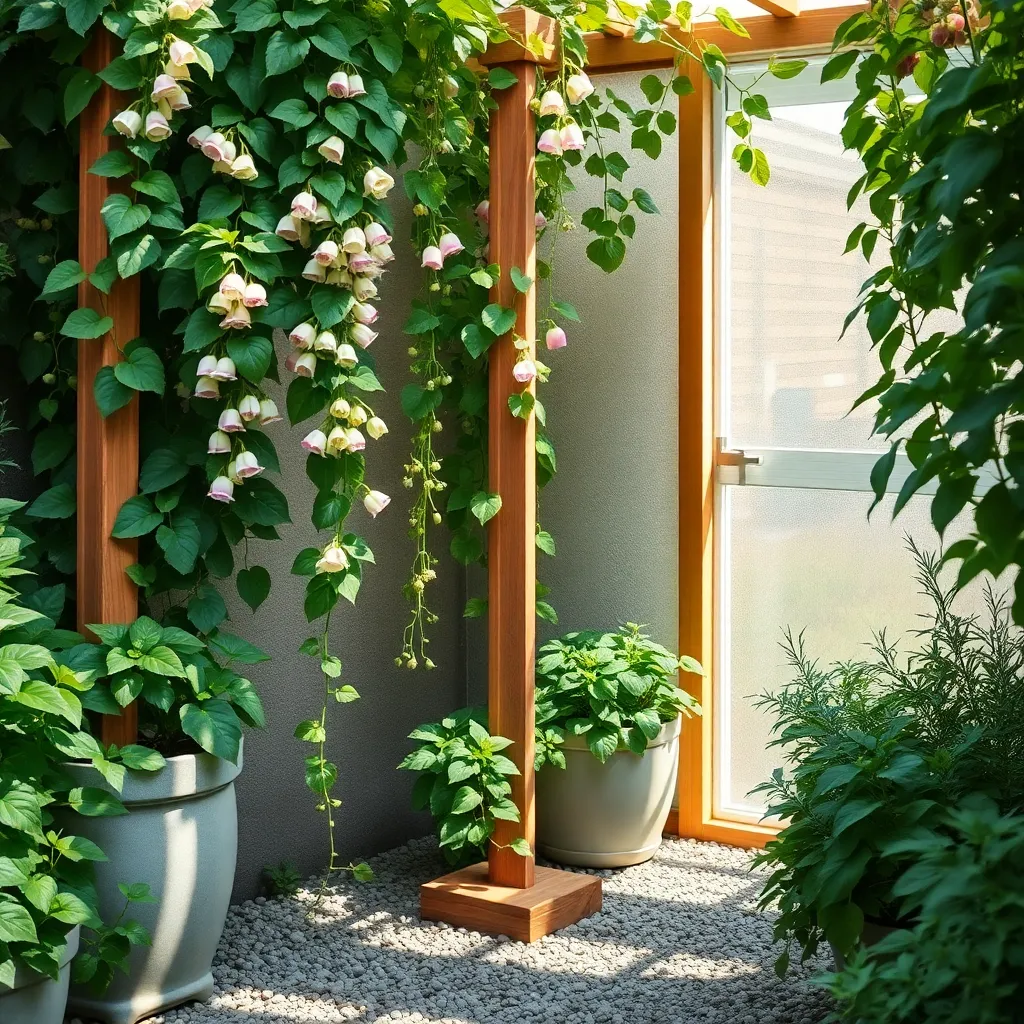
Obelisk trellises are a perfect solution for gardeners dealing with limited space. These vertical structures allow you to grow climbing plants upwards, maximizing your garden’s potential and adding a touch of elegance.
Position obelisk trellises in containers for a movable garden feature that adapts to your space needs. When selecting a container, choose one with adequate drainage and fill it with a well-draining potting mix, such as a blend of peat moss, perlite, and compost.
Climbing plants like peas, beans, and sweet peas benefit greatly from obelisk trellises. Ensure these plants receive at least 6 hours of sunlight daily and water them regularly to keep the soil consistently moist but not waterlogged.
For more experienced gardeners, consider intertwining different vines on a single obelisk to create a tapestry of colors and textures. Prune and train the plants regularly, guiding tendrils around the trellis to encourage even growth and prevent overcrowding.
Position Trellises to Maximize Airflow
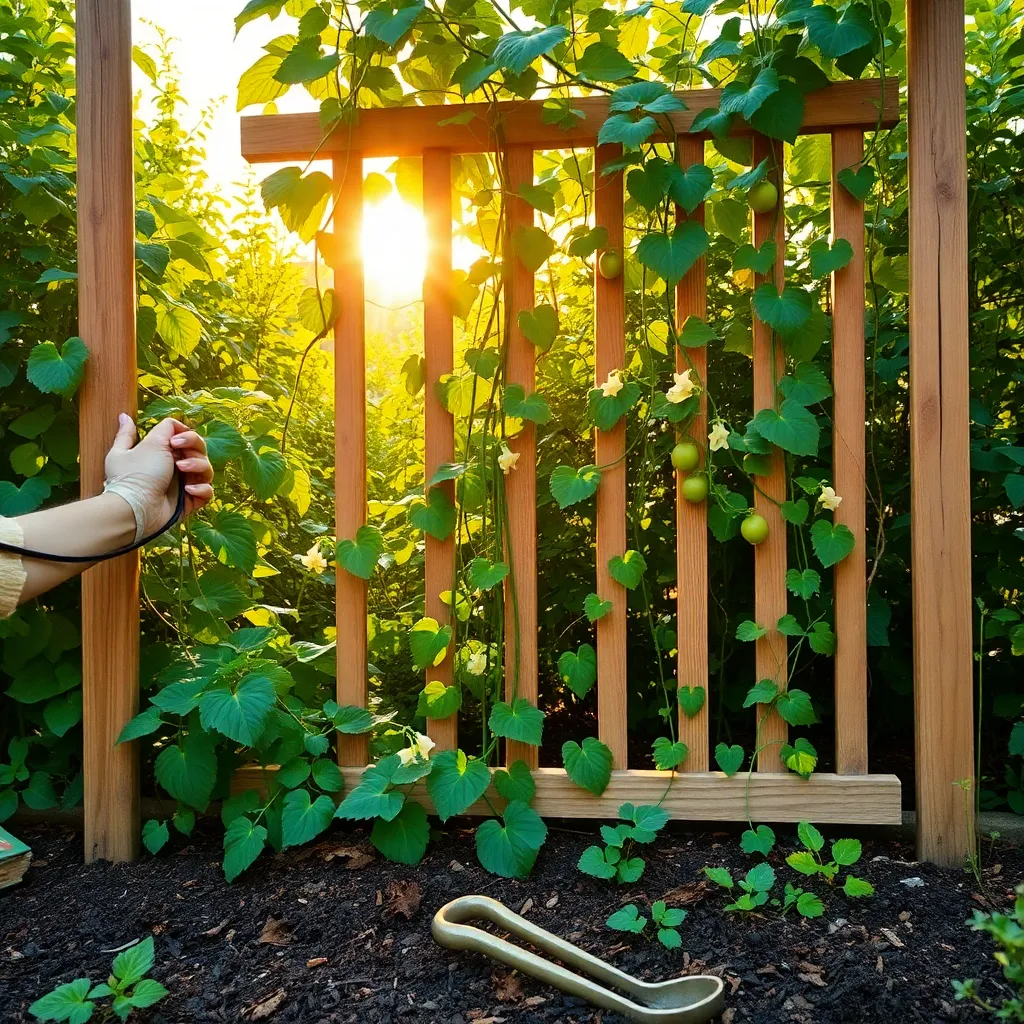
Positioning your trellis to maximize airflow is crucial for the health of climbing plants. Adequate airflow helps prevent fungal diseases like powdery mildew and allows foliage to dry quickly after rain or watering.
Begin by selecting a location that receives a **gentle breeze** throughout the day. This not only helps with air circulation but also prevents your plants from becoming too warm, particularly in sunny spots.
Ensure there’s **enough space** between your trellis and any nearby structures, such as walls or fences. Leaving a gap of at least 12-18 inches allows the air to flow freely around the plants, promoting healthier growth.
For gardeners in humid climates, consider using a **vertical trellis design** that encourages upward growth, minimizing plant density and maximizing air movement. This approach is especially beneficial for dense climbers like cucumbers and peas, as it reduces the risk of moisture buildup.
Train Plants Gently onto Trellises
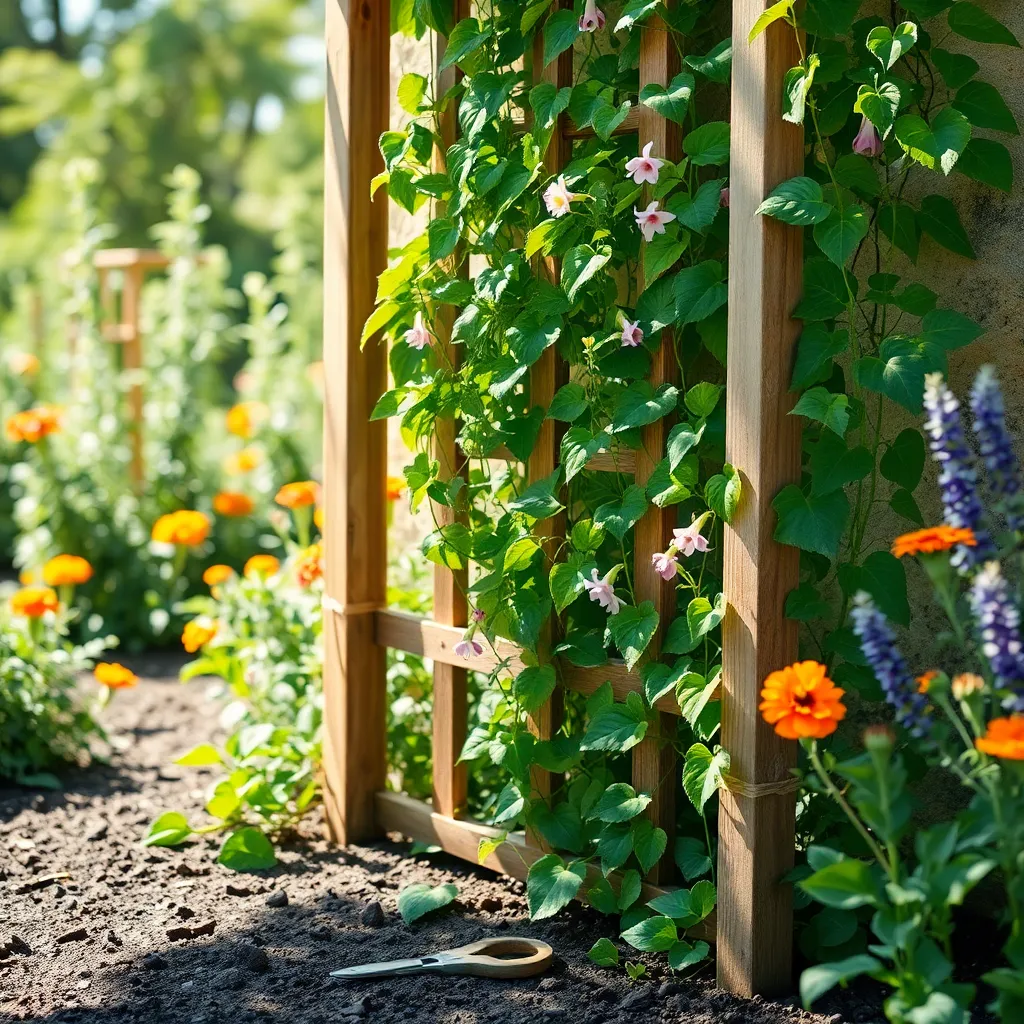
Encouraging plants to climb trellises can enhance both their growth and the aesthetic of your garden. Gently tie the plant’s stems to the trellis using soft materials like twine or fabric strips to avoid damaging the tender growth. This simple step not only supports the plant’s structure but also helps direct its growth upward efficiently.
Inspect your climbing plants regularly to adjust ties as the plant grows. As the stems thicken, loosen the ties to prevent them from cutting into the plant, which can restrict nutrients and water. By maintaining this constant care, you ensure the plant remains healthy and continues to develop properly.
Beginner gardeners should start with plants like peas and beans, which are naturally inclined to climb. These varieties thrive in well-drained soil and require consistent watering, especially during dry spells. Advanced gardeners might experiment with roses or clematis, which require a bit more attention, such as regular pruning and specific soil pH levels.
For challenging plants, consider using a trellis with adjustable height to accommodate their growth spurts. This flexibility allows you to gradually guide them as they reach for sunlight, promoting strong, vertical growth. Remember to position the trellis in a location that receives ample sunlight, as climbing plants typically need full sun to thrive.
Conclusion: Growing Success with These Plants
In exploring the “12 Essential Trellis Ideas for Climbing Plants,” we’ve delved into crucial relationship concepts that serve as the backbone for growth and support. From establishing strong communication (Trellis #1) to nurturing trust (Trellis #2), embracing vulnerability (Trellis #3), and maintaining individuality (Trellis #4), each idea is a stepping stone towards a thriving partnership. We’ve also highlighted the importance of shared goals (Trellis #5), mutual respect (Trellis #6), and fostering intimacy (Trellis #7), while emphasizing conflict resolution (Trellis #8), adaptability (Trellis #9), and consistent effort (Trellis #10). Finally, we examined the role of gratitude (Trellis #11) and creating shared experiences (Trellis #12).
As an immediate next step, choose one concept to focus on this week and take small, intentional actions to nurture that aspect in your relationship. Remember, the path to a flourishing partnership is a continual journey. Save or bookmark this article to revisit these essential ideas anytime you need a reminder or inspiration.
By committing to these principles, you’re not only laying the groundwork for a resilient relationship but also setting the stage for a future of lasting happiness and connection. Here’s to building a love that climbs and blossoms beautifully!

